1. questions
1.1. Can you see all three of the categories you have been working with as relevant to this use of ICT; i.e. acquisition, participation and personal/identity change? Why/how? Why not?
1.1.1. acquisition -
1.1.1.1. gaining knowledge
1.1.2. participation
1.1.2.1. engage in activity with others - level of learning is focused on level of activity not on the gaining of knowledge
1.1.3. personal/identity change
1.1.3.1. taking on the role that they are trainign for
1.2. Are they only subjects or are they also present within the wider community?
1.2.1. yes
1.3. What tools are included in the activity system?
1.3.1. video
1.3.2. patient histories
1.3.3. the TDD methodology
1.4. Where are the learners located?
1.4.1. in the community.
1.4.1.1. they learn jargon etc
2. reasons for using vicarious learning
2.1. In classroom and small group tutorial contexts students are often reluctant to articulate the current state of their understanding. Any utterances they do make may be ‘socially edited’ to a large degree to mask the true extent of their (mis)understanding. The structured nature and limited (topic) scope of TDDs provide a means of limiting the potential for ‘loss of face’ in front of others
2.2. Compared to open classroom or small-group tutorial contexts, the participation by pairs of participants in TDD exercises is designed to ensure a high degree of topic focus and increased amounts of discussion, together with deeper explorations of domain concepts.
2.3. Participating in a TDD exercise is a useful way of learning to reflect upon and express one’s understanding of concepts in a domain, ie. a means of developing ‘epistemic fluency’ (Morrison & Collins, 1995
2.4. TDDs provide a context for several forms of effective collaborative learning, including explaining-to-another, explanations-to-self which are overheard by another, and elaborative co construction (mutually exending each others ideas) (Hausmann, Chi & Roy, 2004).
3. link
4. TDD
4.1. task directed discussion
4.1.1. lowers cognitive load of taks
4.1.1.1. Hence another reason for using TDDs is to not tax participants’ cognitive resources to such an extent that there is no capacity for audience designed conversation.
4.1.2. filmed
4.1.2.1. engage in ‘other directed explaining’. This type of explaining seems to be effective for learning by both speakers and listeners in collaborative learning contexts (Ploetzner, Dillenbourg, Preier & Traum, 1999; Hausmann, Chi & Roy, 2004
